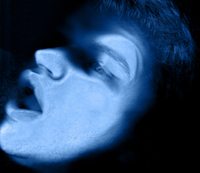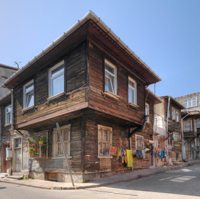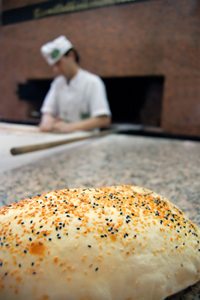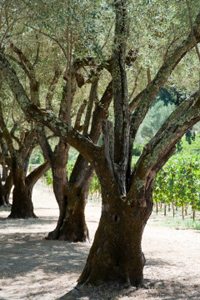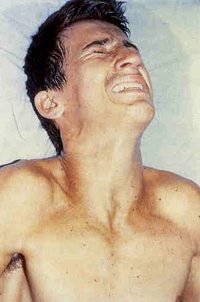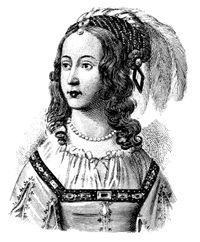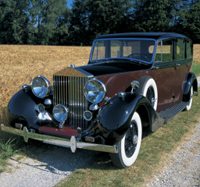How Derived: Memories from Childhood
Researchers: R. Bayer and Ian Stevenson, MD
From: Cases of the Reincarnation Type, Volume III, Twelve Cases in Lebanon and Turkey, by Ian Stevenson, MD
Article by Walter Semkiw, MD
The Drowning of Mehet Cosmen
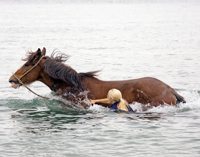 Mehet Cosmen was born around the year 1898 and worked as a farmer in the village of Kayish, in Turkey. Kayish is 20 kilometers or miles from the town of Adana, Turkey. In about the year 1938, when Mehet was 40 years old or so, Mehet was doing his usual chores around his farm. It was summertime and he was harvesting, thrashing and milling grain. In the process, horses used to perform these tasks became covered with dust and chaff from the grain.
Mehet Cosmen was born around the year 1898 and worked as a farmer in the village of Kayish, in Turkey. Kayish is 20 kilometers or miles from the town of Adana, Turkey. In about the year 1938, when Mehet was 40 years old or so, Mehet was doing his usual chores around his farm. It was summertime and he was harvesting, thrashing and milling grain. In the process, horses used to perform these tasks became covered with dust and chaff from the grain.
Mehet would go to the River Seyhan to wash the dust from his horse. On one occasion, Mehet took his horse to be washed in an area of the river that is usually shallow. The level of the river, though, had risen and the spot where Mehet took his horse was deeper than expected. The horse became frightened and bit Mehet on the shoulder, who responded by placing a muzzle on the horse.
Mehet’s horse continued to struggle and pulled Mehet into deeper water, where both Mehet and the horse drowned. Mehet could not swim and when his body was discovered, he was found with his arms wrapped around a tree limb, apparently trying to use the limb to float to safety. As noted, it is thought that the year that Mehet drowned was 1938.
Soul Plan, Renewal of Relationships through Reincarnation & Geographic Past Life Memory: Suleyman visits his Past Life Home
 Suleyman Zeytun was born deaf and mute around the year 1938 in the Turkish village of Kayish, the same village that Mehet Cosmen lived and died in. Suleyman’s parents were Ramazan Zeytun and his wife, Bedia. The exact date of Suleyman’s birth is not known.
Suleyman Zeytun was born deaf and mute around the year 1938 in the Turkish village of Kayish, the same village that Mehet Cosmen lived and died in. Suleyman’s parents were Ramazan Zeytun and his wife, Bedia. The exact date of Suleyman’s birth is not known.
The Zeytun family actually lived next door to the home of Mehet Cosmen, where his widow and surviving children still lived. Indeed, the house of Mehet Cosmen was only 30 meters from the Zeytun home.
As soon as he could walk, Suleyman would leave his house and go directly to the Cosmen home. Ian Stevenson noted that the Cosmen home was in the opposite direction from the center of the village.
Stevenson conjectured that if a child left the house to meet other people and observe activities in the village, the child would go towards the center of the village, rather than the opposite direction.
Nonetheless, Bedia, his mother, said that Suleyman walked to the Cosmen home “every day.” (1)
Soul Plan in Proximity Reincarnation Case
Please note that Mehmet reincarnating next door to his past life home demonstrates planning on the part of his soul. I term this type of case a Proximity Reincarnation Case, as a soul plans a future lifetime so they reincarnate geographically close to their past life family, so that a reunion with loved ones can be enacted through reincarnation.
Past Life Memories: Suleyman Describes his Past Life Drowning as Mehet Cosman
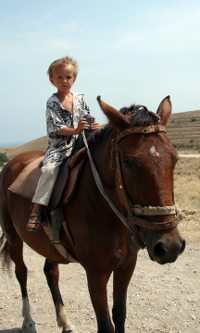 When Suleyman was barely able to walk and when he made one of his first journeys to the Cosmen’s home, he started to communicate through gestures about how Mehet Cosmen had died. From the Cosmen’s home, he would point in the direction of the River Seyhan to the spot where Mehet had drowned. Other gestures regarding the drowning, which Ian Stevenson observed, include the following:
When Suleyman was barely able to walk and when he made one of his first journeys to the Cosmen’s home, he started to communicate through gestures about how Mehet Cosmen had died. From the Cosmen’s home, he would point in the direction of the River Seyhan to the spot where Mehet had drowned. Other gestures regarding the drowning, which Ian Stevenson observed, include the following:
1. Ian Stevenson noted that Suleyman would turn his hand in a circle with fingers pointing down to imitate the motion of a horse walking in a circle to move the grinding stone to crush grain.
2. Stevenson observed Suleyman holding his arms and hands parallel to one another to imitate the holding of reins, while leaning back to get the horse to go into the river.
3. Suleyman put his right hand on his shoulder and grasped his shoulder, to show that the horse bit him. Ian Stevenson noted that Suleyman would clinch and show his teeth to imitate the horse biting him.
4. Ian Stevenson then observed Suleyman using his right hand in a circular motion to imitate winding a muzzle cord around the mouth of the horse.
5. Suleyman held both hands in front of him as if holding the reins of the horse. He then would lean to the left and backwards with extended arms to imitate falling off the horse.
6. Ian Stevenson noted that Suleyman then put the fingers of his right hand into his mouth to show that he was swallowing water as he fell from the horse.
8. Suleyman the put his right hand around his throat to show that he was drowning.
At first, Suleyman’s family and the surviving family of Mehut Cosmen were unsure of what Suleyman was trying to communicate. Suleyman’s pointing out of the specific spot in the River Seyhan where Mehut had drowned, along with his pantomime consistent with the events which led to Mehut’s death, allowed the families to understand that Suleyman was conveying that he had been Mehut Cosmen in a past lifetime.
Past Life Memories & Possesions: Little Suleyman Claims that Mehet Cosmen’s Koran and a Buffalo are His
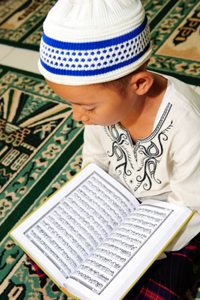 Between the ages of two and three, Suleyman began making gestures trying to express that items in the Cosmen family home belonged to him. He then tried to take these items back with him to the Zeytun family home. As examples, he tried to walk away with the Cosmen family Koran, claiming it was his, and he tried to lead a buffalo from the Cosmen’s land to the home of the Zeytun family.
Between the ages of two and three, Suleyman began making gestures trying to express that items in the Cosmen family home belonged to him. He then tried to take these items back with him to the Zeytun family home. As examples, he tried to walk away with the Cosmen family Koran, claiming it was his, and he tried to lead a buffalo from the Cosmen’s land to the home of the Zeytun family.
Past Life Emotions: Suleyman Gestures his Love for Members of the Cosmen Family
To the brother of Mehet Cosman, whose name was Saban, Suleyman put his two fingers together as a sign of closeness.
To Hatice Cosmen, the widow of Mehet, Suleyman would put his two fingers together as a sign of closeness and then point to his heart, apparently trying to show Hatice that they had been in love with one another.
Past Life Emotions: Little Suleyman’s Protection of Members of the Cosmen Family
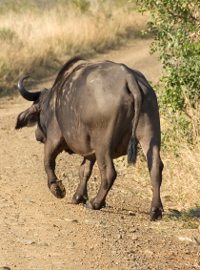 Mehmet Cosmen was very devoted to his wife, Hatice, and worked hard so that Hatice would not have to take a job outside their home. After his death, Hatice had to work for other people in the village, doing tasks such as baking bread. When Suleyman saw that Hatice was working for others, he became very upset, started crying and made gestures indicating that her working for others was wrong.
Mehmet Cosmen was very devoted to his wife, Hatice, and worked hard so that Hatice would not have to take a job outside their home. After his death, Hatice had to work for other people in the village, doing tasks such as baking bread. When Suleyman saw that Hatice was working for others, he became very upset, started crying and made gestures indicating that her working for others was wrong.
If Hatice would physically discipline her children, Suleyman would object. When Mehmet’s son, Abdullah, got into arguments with others, Suleyman would protest on his behalf.
Suleyman’s attachment to Mehmet’s family, which started at the age of three, continued until he was at least 29 years of age. Though Suleyman and his family eventually moved to the city of Adana, Suleyman would continue to visit the Cosman family in Kayish.
Suleyman would bring presents to Abdullah, Mehmet’s son. Ian Stevenson made the following poignant observation of Suleyman’s attachment to the daughters of Mehmet:
“He attended the weddings of Mehmet Cosmen’s daughters, crying at each like an affectionate father would do.” (2)
Refika, one of Mehmet’s married daughters, related that Suleyman would often visit her family in the Taurus region of Turkey and stay with them. This is reminiscent of the case of Rashid Khaddege | Daniel Jurdi, who visited his past life family on a monthly basis and also stayed with them, sleeping on a cot reserved for him. The Khaddege | Jurdi case also shows that facial features can remain consistent from one lifetime to another.
Suleyman also remained close to Mehet’s widow, Hatice, though their relationship was of a mother and son, rather than a married couple.
Past Life Phobia of Water
 Suleyman had marked fear of water that persisted until he was at least 27 years of age. In contrast to his schoolmates, he refused to learn to swim in the river. He consistently demonstrated fear at the spot on the River Seyhan where Mehmet Cosmen had drowned.
Suleyman had marked fear of water that persisted until he was at least 27 years of age. In contrast to his schoolmates, he refused to learn to swim in the river. He consistently demonstrated fear at the spot on the River Seyhan where Mehmet Cosmen had drowned.
Ian Stevenson, MD, of the University of Virginia, on the Validity of the Mehmet Cosmen | Suleyman Zeytun Reincarnation Case
Ian Stevenson made the point the Suleyman’s deafness serves to strengthen the validity of the case, as Suleyman could not have heard about the death of Mehmet Cosmen from the conversations of others. Suleyman began trying to communicate about his past lifetime as Mehmet long before he was taught to read or write.
Ian Stevenson, in his investigations, was always looking for ways that parents and other involved parties might coach children in testifying about claimed past lives. He was keen to expose any fraud in reincarnation cases.
Ian Stevenson noted that not only did Suleyman’s deafness exclude the possibility of learning about Mehmet’s death from verbal conversations, but it would make it very difficult for anyone to coach Suleyman to falsely claim a past lifetime. Further, Ian Stevenson noted that it would be even more difficult for someone to coach Suleyman to express sentimental emotions towards Mehmet’s family, such crying at the weddings of Mehmet’s daughters.
Was Suleyman’s Deafness and Muteness Karmic in Origin
 Villagers in Kayish wondered why Suleyman was born deaf and mute. They concluded that if his disabilities were related to karma, it could not have stemmed from the lifetime of Mehmet Cosmen, as all agreed that Mehmet led a pious life with no misdeeds. If the disabilities were related to karma, they reasoned, it must have due to actions in some other lifetime.
Villagers in Kayish wondered why Suleyman was born deaf and mute. They concluded that if his disabilities were related to karma, it could not have stemmed from the lifetime of Mehmet Cosmen, as all agreed that Mehmet led a pious life with no misdeeds. If the disabilities were related to karma, they reasoned, it must have due to actions in some other lifetime.
Ian Stevenson noted that Suleyman’s parents, Ramazan and Bedia, were cousins. Since they were of the same biologic family, recessive genes for these disabilities were able to be expressed. As such, Suleyman’s disabilities may have simply have been an issue of genetics.
Whether disabilities or misfortunes are related to karma from prior incarnations is an issue that needs to be better understood and presents a future challenge for those involved in reincarnation research.
Principles of Reincarnation & Understanding Past Lives
This reincarnation case demonstrates the following features:
Soul Plan, Proximity Reincarnation Case: Mehmet Cosmen appears to have reincarnated as Suleyman Zeytun next door to his own past life home in Kayish, Turkey. Though Mehmet did not technically reincarnate into the same family, he reincarnated into a family that gave him direct access to his past life family. I term types of cases “proximity cases,” as the soul reincarnated nearby its last incarnation in order to reconnect with loved ones.
Please note that reincarnating next door to one’s past life home to be reunited with loved ones involves planning by the soul from the spirit realm.
As soon as he could walk, Suleyman made his way to Mehmet’s former home and went on to renew relationships with past life family members. Ian Stevenson noted that Suleyman’s attachment to Mehmet’s children was so strong that at the weddings of Mehmet’s daughters, he wept like any affectionate father would.
As in all same family reincarnation cases, planning by the soul is involved. The soul of Mehmet Cosmen appears to have planned his next incarnation so that he would be born next door to his past life home, so that he could return to his past life family.
Phobia from a Past Incarnation: Mehmet died from drowning and Suleyman demonstrated a fear of water, particularly at the spot in the River Seyhan where Mehmet had drowned.
Change in Religion: It was noted that Suleyman claimed the Koran from the Cosmen home as his own and he tried to take it back to the Zeytun family home. This indicates that Mehmet Cosmen was a Muslim and was we recall, he was noted to be a very pious man.
Ian Stevenson does not specifically indicate what religion Suleyman and his family practiced, but it is safe to say that they developed a belief in reincarnation as Suleyman’s memories of his past lifetime as Mehmet Cosmen became known and validated.
Split Incarnation: Though the exact dates of Mehmet’s drowning and Suleyman’s birth are not known, Ramazan, Suleyman’s father, estimated that the interval between Mehet’s death and Suleyman’s birth was between five to ten days.
Ian Stevenson explained that the villagers of Kayish did not refer to calendars often, but they did remember significant events in their community. The drowning of a member of the village and the birth of a son are events that Ramazan would remember distinctly and as such, Stevenson thought Ramazan’s estimate was likely accurate.
If one assumes that the soul is involved in the development of the fetus and if the interval between Mehmet’s drowning and Suleyman’s birth was only 5-10 days, then the soul of Mehmet inhabited the developing fetus of Suleyman for essentially the entire time that Suleyman was in the womb. This soul was animating both Suleyman, who was in the womb, and Mehmet, who was still alive, for a period of nine months.
This same phenomenon was observed in the very important case of Hanan Monsour | Suzanne Ghanem, as Suzanne was born only 10 days after Hanan died. As such, Hanan was alive almost the entire time that Suzanne was in the womb, indicating that the soul of these two women were animating two bodies at one time. The Monour | Ghanem case also demonstrates that facial features can remain consistent from one lifetime to another.
This phenomenon of a soul inhabiting more than one body at a time has been termed split incarnation. One of the most dramatic examples of split incarnation is found in the very compelling cases involving Penney Peirce. Penney’s soul appears to have inhabited the bodies of two of her past incarnations, those of Alice Cary and Charles Parkhurst, where these two past lives overlapped by 29 years.
Why does the soul incarnate in more than one body at a time? One major reason is to get more accomplished, including working off of karma and participating in projects that are important to the soul. It is also possible that the soul is aware of a destined event, such as an upcoming death, and begins another incarnation to continue its work or to maintain attachments with loved ones
Footnotes
1. Stevenson, Ian: Cases of the Reincarnation Type: Volume III, Twelve Cases in Lebanon and Turkey, University of Virginia Press, 1980, page 262
2. Stevenson, Ian: Cases of the Reincarnation Type: Volume III, Twelve Cases in Lebanon and Turkey, University of Virginia Press, 1980, page 266

